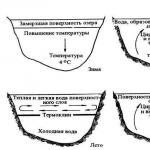Despite the simple formulation of the question “Why does the Sun shine?” the answer to it requires some base of physical knowledge and to present it in one sentence is a difficult task. We will try to solve it towards the end of the article, which we will begin with historical background.
Story
One of the first who tried to explain the nature of the Sun from a scientific point of view was the ancient Greek astronomer and mathematician Anaxagoras, according to whom the Sun is a hot metal ball. For this, the philosopher was imprisoned. Before the instrumental study of the Sun began in the 17th century, there was still a lot of speculation about the nature of sunlight, even to the constantly burning forests on the surface.
Since the 17th century, scientists have discovered such a phenomenon as sunspots, and it becomes possible to calculate the period of rotation of the Sun. It becomes clear that our star is a kind of physical body with a complex structure. In the 19th century, spectroscopy appeared, with the help of which it was possible to decompose a sunbeam into its component colors. Thus, thanks to the absorption lines, Fraunhofer manages to detect a new chemical element that is part of the star - helium.
In the mid-19th century, scientists were already trying to describe the glow of the Sun using more complex scientific hypotheses. So Robert Mayer suggested that the star is heating up due to bombardment by meteorites. Somewhat later, in 1853, a more plausible idea arose, the so-called “Kelvin-Helmholtz mechanism,” according to which the Sun heated up due to gravitational compression. However, in this case, the age of the star would be much less than it actually is, which contradicts some geological studies.
Why does the sun shine

The British physicist Ernest Rutherford was the first to come up with the correct answer to this question, who suggested that radioactive decay occurs in the Sun and it is this that is the source of the star’s energy. Later, in 1920, the English astrophysicist Arthur Eddington developed Rutherford's idea, arguing that a thermonuclear fusion reaction could occur in the Sun's core under the influence of the internal pressure of the Sun's own mass. After 10 years, the main fusion reactions generating the observed amount of energy were calculated.
Briefly, the thermonuclear reaction that causes the Sun to shine can be described as the fusion of protons (hydrogen nuclei) into a helium-4 nucleus. Since the helium-4 nucleus has less mass than the hydrogen nucleus, the energy difference (free energy) is emitted in the form of photons - particles that are electromagnetic radiation.
Thermonuclear reaction
Proton-proton thermonuclear fusion reactions occurring inside stars with a solar mass or less can be divided into three chains: ppI, ppII, ppIII. Of these, ppl accounts for more than 84% of the Sun's energy. The proton-proton reaction consists of three cycles, where the first is the interaction of two protons (two hydrogen nuclei). With enough energy to overcome the Coulomb barrier, the two protons merge to form a deuteron. Since the deuteron nucleus, consisting of two protons, has less mass than two individual protons, free energy is generated, due to which a positron and an electron neutrino are created, which are emitted from the region where the reaction took place.
Next, due to the interaction of a deuteron and another proton, helium-3 is formed with the release of energy in the form of electromagnetic radiation. Further stages of the reaction can be clearly seen in the diagram below.

Reactions taking place inside the sun
In addition to the proton-proton thermonuclear fusion reaction, a small contribution to the energy released by the Sun is made by a reaction of the proton-electron-proton type (0.23%).
Thus, summarizing the above, the Sun emits electromagnetic waves of various frequencies, including in the region of visible light, which are formed by particles born as a result of released energy during the proton-proton (proton-electron-proton) thermonuclear fusion reaction.
It is calculated that on average the amount of radiation emanating from each square meter of the solar surface is 62 thousand kilowatts, which is approximately equal to the power of the Volkhov hydroelectric station. The radiation power of the entire Sun is equivalent to the work of 5 billion billion (5·10 18) such power plants!
Let us give one more figure: every square meter of the solar surface emits as much light as could be produced by 5 million 100-watt light bulbs... So, tirelessly, our radiant luminary “works” not for centuries or even millennia, but for billions of years !
What happens on the Sun? Where does it continuously draw a truly colossal amount of energy?
In 1920, the outstanding English astronomer Arthur Eddington (1882-1944) first suggested that thermonuclear fusion could be a source of solar energy. Subsequently, other scientists developed this idea. According to modern ideas, nuclear reactions occur in the depths of the Sun and similar stars, that is, processes during which not chemical compounds are formed, but nuclei of new chemical elements. And in the hot interior of the star, where the temperature can reach 15 million degrees, the nuclei of hydrogen atoms - protons, overcoming the force of mutual repulsion, come closer and, “merging”, form helium nuclei. This process of converting hydrogen into helium consists of a chain of three successive nuclear interactions called proton-proton cycle, as a result of which one helium nucleus is formed from four hydrogen nuclei. But the mass of the helium nucleus is slightly less than the mass of four protons. Thus, when synthesizing 1 g of hydrogen, the “mass defect” is 7 mg. Knowing this and using it discovered by Albert Einstein (1879-1955) law of relationship between mass and energy, it can be calculated that only the “combustion” of 1 g of hydrogen releases 150 billion calories! In a solar thermonuclear “boiler,” 564 million tons of hydrogen should “burn” every second, that is, turn into 560 million tons of helium. And if half of the hydrogen reserves remaining on the Sun were used for thermonuclear fusion, then the Sun would shine and warm the Earth with unabated force for another 30 billion years. This means that the thermonuclear process may be that inexhaustible source of solar energy that has not been established for so long.
Thermonuclear reactions occur only at temperatures above 10 million degrees. Such a high temperature can only prevail in the very “central” region of the Sun with a radius equal to about a quarter of the solar one. The energy in this self-controlled thermonuclear reactor is released in the form of hard gamma rays.
The “leakage” of radiation from the center of the Sun to the surface occurs extremely slowly. In this case, in the process of energy transfer from layer to layer, gamma quanta are crushed. First they turn into X-ray quanta, then into ultraviolet ones... About 10 million years will pass before the gamma ray quanta born in the bowels of the star emerge from it as photons of visible light. Thus, the light emitted by the Sun today was generated at the end of the Tertiary period, that is, long before the appearance of modern man on Earth.
But the optical (visible) radiation of the Sun does not reflect the physical essence of the phenomena occurring in the depths of the star. And if so, then solar thermonuclear fusion is just a hypothesis that needs to be proven.
It’s hard to believe, but those stars that shine from the sky at night and the Sun that illuminates us during the day are one and the same. Why does the Sun shine during the day and not at night like “normal” stars? Let's dive into the science.


The Sun is the star closest to our planet. The Sun is the center of our planetary system, which got its name from the name of the star - Solar. The distance from the Earth to the Sun is approximately 150,000,000 kilometers. The mass of a star called the Sun is 330,000 times greater than the mass of our planet. Moreover, the Sun is not a solid body like the Earth, but is a spherical accumulation of hot gases. If someone does not believe in the gaseous nature of the Sun, then just imagine: the temperature on its surface is approximately 6000 degrees Celsius. The core (central part) of the Sun is heated to millions of temperatures. Not a single material, alloy or element currently known to science can remain solid at such temperatures.


Why the Sun Shines: Scientific Explanation Previously, it was believed that the Sun shines due to the combustion of the elements that make up its composition. But according to rough estimates, even rough ones, it cannot “burn out” for billions of years; the Sun should have gone out quite a long time ago, having lost its mass, thereby disturbing the gravitational balance in the system of planets and letting them float freely across the expanses of the Galaxy. But this does not happen, the Sun has been shining for billions of years and does not think of drying up. What makes the Sun shine? Scientists have found out and proven that the glow of the Sun is the result of the release of colossal amounts of energy obtained as a result of thermonuclear processes occurring in it. Thermonuclear processes are remarkable in that the consumption of matter releases millions of times more energy than during combustion. Yes, that’s why thermonuclear energy is the future, its disadvantage is the difficulty of starting the reaction. Starting a thermonuclear reaction requires enormous amounts of energy and complex consumables, such as synthetic uranium or plutonium.

Why does the Sun shine during the day and not at night? Everything is simple here. The very phenomenon of night is the turning of part of the planet with its “back” to the Sun. And since the planet rotates evenly around its axis, and a revolution takes approximately 24 hours, it is easy to calculate the time allotted to the night - 12 hours. It turns out that half of the Earth is turned towards the Sun for 12 hours and it illuminates it, and in the remaining 12 hours it is on the other side of the globe, not illuminated by the Sun. It turns out that when the Sun is shining, we have day, and when the Sun does not illuminate our part of the Earth, we have night. Phenomena such as morning and evening are side effects caused by the ambiguous nature of light and the accompanying effect of diffraction. So, knowing now why the Sun shines, you should also find out how much time it has left to please us. This is about 5 billion years, after which, having lost about a percent of its mass, the Sun will lose stability and go out.
More details on Elhow: http://elhow.ru/ucheba/astronomija/pochemu-svetit-solnce?utm_source=users&utm_medium=ct&utm_campaign=ct
A growing person is interested in literally everything. He asks questions about everything he sees. Why does the sun shine during the day and the stars at night? And so on and so forth. Answering seemingly simple questions is not always easy. Sometimes some special knowledge is missing. And how can we explain something complex in a simple way? Not everyone can do this.
What is a star?
Without this concept, it is impossible to clearly explain why the sun shines during the day and the stars at night. Children often imagine stars as small dots in the sky, which they compare to small light bulbs or lanterns. If we draw an analogy, they can be compared to huge spotlights. Because the stars are unimaginably huge, incredibly hot and located at such a distance from us that they seem crumbs.
What is the sun?
First, you need to tell us that the Sun is a name, like a name. And the star closest to our planet bears this name. But why isn't it a point? And why does the sun shine during the day and the stars at night, if they are the same?
The sun does not appear to be a point because it is much closer than the others. Although it is also far from it. If you measure the distance in kilometers, the number will be equal to 150 million. A car will travel this distance in 200 years if it moves without stopping at a constant speed of 80 km/h. Due to its incredibly large distance, the sun appears small, although it is such that it could easily accommodate a million planets similar to Earth.
By the way, the sun is far from the largest and not very bright star in our sky. It is simply located in the same place as our planet, and the rest are scattered far in space.
Why is the sun visible during the day?
First you need to remember: when does the day begin? The answer is simple: when the sun begins to shine over the horizon. Without his light this is impossible. Therefore, answering the question of why the sun shines during the day, we can say that the day itself will not come if the sun does not rise. After all, as soon as it goes beyond the horizon, evening comes, and then night. By the way, it is worth mentioning that it is not the star that moves, but the planet. And the change from day to night occurs due to the fact that planet Earth rotates without stopping around its fixed axis.
Why are the stars not visible during the day if they, like the sun, always shine? This is explained by the presence of an atmosphere on our planet. In the air they dissipate and outshine the faint glow of the stars. After it sets, the scattering stops, and nothing blocks their dim light.

Why the moon?
So, the sun shines during the day and the stars at night. The reasons for this are in the air layer surrounding the earth. But why is the moon sometimes visible, sometimes not? And when it is there, it can take on different forms - from a thin sickle to a bright circle. What does this depend on?
It turns out that the moon itself does not glow. It works like a mirror that reflects the sun's rays onto the ground. And observers can see only that part of the satellite that is illuminated. If we consider the whole cycle, it begins with a very thin month, which resembles an inverted letter “C” or an arc from the letter “P”. Within a week it grows and becomes like half a circle. Over the next week it continues to increase and every day it gets closer to a full circle. Over the next two weeks, the pattern decreases. And at the end of the month, the moon completely disappears from the night sky. More precisely, it is simply not visible, because only that part of it that turned away from the Earth is illuminated.

What do people see in space?
Astronauts in orbit are not interested in the question of why the sun shines during the day and the stars at night. And this is due to the fact that both are visible there at the same time. This fact is explained by the absence of air, which prevents light from the stars from passing through the scattered rays of the sun. You can call them lucky because they can immediately see both the nearest star and those that are far away.
By the way, night lights differ in color. Moreover, this is clearly visible even from Earth. The main thing is to look closely. The hottest ones glow white and blue. Those stars that are cooler than the previous ones are yellow. These include our Sun. And the coldest ones emit red light.

Continuing the conversation about the stars
If the question of why the sun shines during the day and the stars at night arises among older children, then you can continue the conversation by remembering the constellations. They combine groups of stars that are located in one place on the celestial sphere. That is, they seem to be located nearby to us. In fact, there may be a huge distance between them. If we could fly far from the solar system, we would not recognize the starry sky. Because the outlines of the constellations would change greatly.
In these groups of stars the outlines of human figures, objects and animals were seen. In this regard, various names appeared. Ursa Major and Ursa Minor, Orion, Cygnus, Southern Cross and many others. Today there are 88 constellations. Many of them are associated with myths and legends.
Because of the constellation, they change their position in the sky. And some are generally visible only in a certain season. There are constellations that cannot be seen in the Northern or Southern Hemisphere.
Over time, the constellations lost minor stars, and from their patterns it became difficult to guess how the name came about. The most famous constellation in the Northern Hemisphere, Ursa Major, has now turned into a “bucket”. And modern children are tormented by the question: “Where is the bear?”
Sections: Elementary School , Competition "Presentation for the lesson"
Presentation for the lesson
Back forward
Attention! Slide previews are for informational purposes only and may not represent all the features of the presentation. If you are interested in this work, please download the full version.
Lesson objectives:
- form an idea of the stars;
- develop ideas about the shape, size, color of objects;
- develop the ability to work in a team.
Equipment: textbook “The world around us” 1st grade author A.A. Pleshakov, workbook, projector, presentation, plasticine.
DURING THE CLASSES
1. Organizational stage
2. Motivation for educational activities
- Guys, today Ant came to say thank you. You answered many of his questions, But he cannot solve the riddle. And having guessed the riddle, we will find out the topic of our lesson.
(2 slide)
Mystery
The grain scattered by night,
We looked in the morning - there was nothing.
What is this? (Stars)
– Today we will look for the answer to the question “Why does the Sun shine during the day and the stars at night?” And for this we will go on a space journey.
Children stand up and say the words:
“Fast rockets are waiting for us
To distant planets
Whichever one we want
We'll fly to this one
Stars, wait for us to visit you.” (3 slide)"One two Three
You need to sit down carefully
So as not to touch the devices.
Take a chair,
Fasten your seat belts."
3. Updating knowledge
– We fly through outer space and see many luminous points. (4 slide)
- What is this? (These are the stars)
-What are stars?
Children express their guesses.
4. Presentation of new material
(5 slide)
Stars are huge flaming balls. They are far from the Earth and therefore appear small. They flicker in different colors: red, white, yellow, blue.
(6 slide)
White and blue stars are very hot. Yellow stars are cooler than white ones, red ones are cooler than yellow ones. The sizes of stars are different.
– Why do the stars shine at night and the Sun during the day?
– What do you guys think?
(Children's answers)
5. Modeling stars
(7 slide)
– Now we will create models of stars. What's the biggest star? (Aldebaran)
- And the smallest one? (Sun)

– Which star is colder? (Aldebaran)
– Which stars are very hot? (Regulus and Sirius)
– Why do stars seem small?
Conclusion. The sun is a star, a yellow dwarf.
6. Physical education minute
7. Consolidation of new knowledge
(9 slide)
The sun is a star that we see during the day.
– Why do we see the Sun, but not such a large star Aldebaran? (This is the closest star to Earth)
The sun is a huge ball of fire. The temperature on the surface of the Sun is 20 million degrees. The sun is 109 times larger than the Earth.
If you imagine that the ball is the Sun, then the pea is our Earth. The sun creates our day, its rays reach the surface of the Earth, warm it, and illuminate it. Without the Sun there would be no life on Earth. While the Sun is shining, the radiance of other stars is not visible.
8. Physical education minute
9. Work on page 89 of the textbook
Stars, stars, from a long time ago
Chained you forever
A man's greedy gaze.
People have been observing the stars for a long time. Previously, they were called astrologers, but now scientists are astronomers. (10 slide)
People, watching the stars, noticed that they form different figures: birds, animals, people. These figures were called constellations and given names.
Mystery
From which bucket?
They don't drink, they don't eat,
But they just look at him. (Constellation Ursa Major)
Not far from this constellation, people discovered another constellation Leo. It consists of 70 stars.
10. Lesson summary
We returned from the flight
And they fell to Earth.
Questions. (12 slide)
11. Reflection
There are two suns on the board: happy and sad.
- Guys, if you worked actively in class and learned something new about the stars, then add a ray of cheerful sunshine, and if you were bored in class and didn’t learn anything new, then add a ray of sad sunshine.





